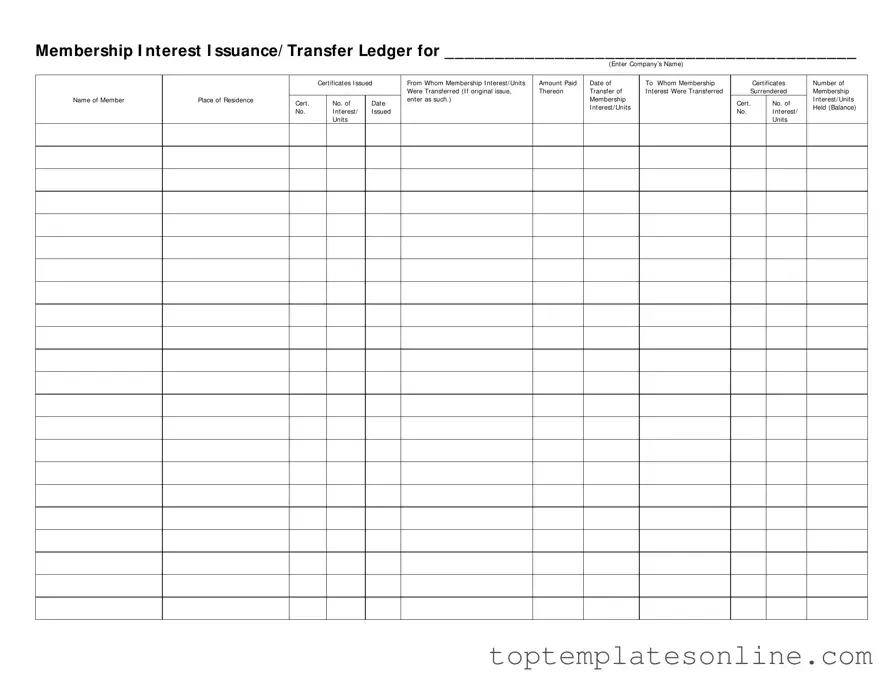The Membership Ledger form serves as a crucial document for organizations that issue membership interests or units, providing a clear record of all transactions related to these interests. This form is designed to capture essential details about the membership interests being issued or transferred, ensuring transparency and accountability. Users are prompted to enter the name of the company at the top, which sets the context for the ledger. Each entry includes information about the certificates issued, the parties involved in the transaction, and the amounts paid. Additionally, it records the dates of transfer, allowing for a chronological overview of membership changes. For each transaction, the form requires the names and places of residence of the members, as well as the certificate numbers associated with the membership interests. This meticulous record-keeping not only helps in tracking ownership but also aids in compliance with legal requirements, making it an invaluable tool for both organizations and their members.
